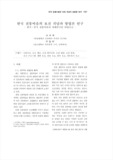

-
 * 본 문서는 배포용으로 복사 및 편집이 불가합니다.
* 본 문서는 배포용으로 복사 및 편집이 불가합니다.
미리보기
서지정보
· 발행기관 : 한국건축역사학회
· 수록지 정보 : 건축역사연구 / 20권 / 6호
· 저자명 : 이주옥, 한필원
목차
1. 서론
1-1. 연구의 배경과 목적
1-2. 연구의 대상
1-3. 연구의 단계와 방법
2. 사례마을의 특성과 주요 자산
2-1. 한국의 전통마을
2-2. 중국의 전통마을
3. 보전의 개념 설정
3-1. 한국 전통마을의 현행 보전 개념
3-2. 중국 전통마을의 현행 보전 개념
3-3. 전통마을 보전 개념의 설정
4. 보전 대상의 정립
4-1. 한국 전통마을의 현행 보전 대상과 문제점
4-2. 중국 전통마을의 현행 보전 대상과 문제점
4-3. 보전 대상의 유형화와 구성
5. 전통마을 보전의 방법론
5-1. 연계화․네트워크화를 통한 보전대상의 구조화
5-2. 사용방식을 토대로 한 보전 프로그램 작성
6. 결론
참고문헌
Abstract영어초록
The objective of this study is to establish the method of conservation for traditional Korean settlements, based on the field surveys on the representative traditional settlements in Korea and China. The method is approached from grasping the conservation mechanism in which non-physical aspects deeply influence physical ones. The study has analyzed the characteristics and problems in the current methods of conservation for the traditional settlements, through comparing conservation practices at the World Heritage-class settlements such as Yangdong, Hahoi, and Oeam villages in Korea and Xidi-cun, Hong-cun, and Dangjia-cun in China. As a consequence of the study, the conservation method for the traditional Korean settlements is established as follows; Firstly, the conservation targets are classified into 4 types in terms of the relations of elements; individual, correspondent, sequential, and network elements. Secondly, the conservation strategies include the structuralizations of targets, by means of sequencing and networking. Thirdly, the conservation programs are made in consideration of the sustenance, transformation, replacement, and extinction of traditional use patterns.참고자료
· 없음태그
- # 전통마을
- # 보전 개념
- # 보전 메커니즘
- # 보전 대상
- # 보전 방법
- # 보전 프로그램
- # 개별 요소
- # 대응 요소
- # 연계 요소
- # 네트워크 요소
- # Traditional Settlement
- # Conservation Concept
- # Conservation Mechanism
- # conservation target
- # Conservation Method
- # Conservation Program
- # Individual Element
- # Correspondent Element
- # Sequential Element
- # Network Element
-
자료후기
-
자주묻는질문의 답변을 확인해 주세요

꼭 알아주세요
-
본 학술논문은 (주)코리아스칼라와 각 학회간에 저작권계약이 체결된 것으로 AgentSoft가 제공 하고 있습니다.
본 저작물을 불법적으로 이용시는 법적인 제재가 가해질 수 있습니다. -
해피캠퍼스는 구매자와 판매자 모두가 만족하는 서비스가 되도록 노력하고 있으며, 아래의 4가지 자료환불 조건을 꼭 확인해주시기 바랍니다.
파일오류 중복자료 저작권 없음 설명과 실제 내용 불일치 파일의 다운로드가 제대로 되지 않거나 파일형식에 맞는 프로그램으로 정상 작동하지 않는 경우 다른 자료와 70% 이상 내용이 일치하는 경우 (중복임을 확인할 수 있는 근거 필요함) 인터넷의 다른 사이트, 연구기관, 학교, 서적 등의 자료를 도용한 경우 자료의 설명과 실제 자료의 내용이 일치하지 않는 경우
문서 초안을 생성해주는 EasyAI

